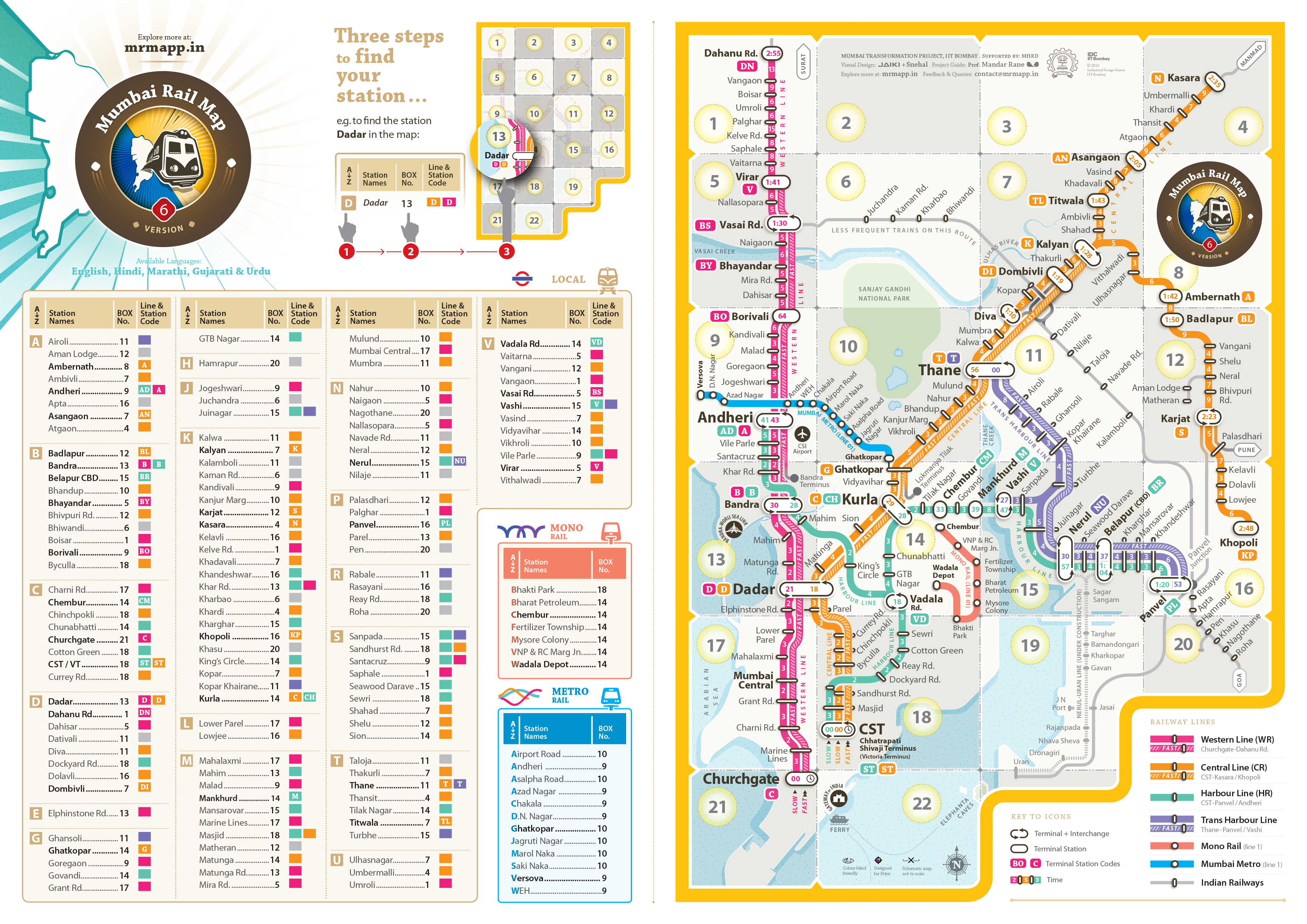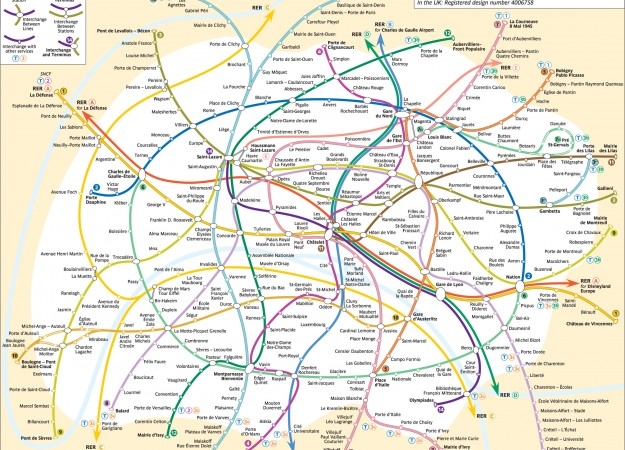Traffic to Schemes: India’s Problems Can Be Solved By Adding This Simple Step
Most of India’s problems can be fixed - if we take more time thinking about how the solution is implemented, rather than being focused solely on finishing the project - one way or the other.

In 2013, two visual communication students from the Indian Institute of Technology Bombay (IIT-B) worked on a project that offered respite to commuters of the city’s local rail network.
And how did they do that? By designing a comprehensive colour-coded railway map with a unique navigation system covering connecting routes that links Western, Central, Harbour and Trans-Harbour train stations across the city.
Jaikishan Patel and Snehal Patil also spared an extra thought for those with colour blindness and incorporated relevant changes while testing the map for its efficiency. Back then, they were first-year students at IIT-B’s Industrial Design Centre (IDC).
But their well-conceived design, compact enough to fit an A5-sized paper, turned out to be a game-changer in the heavily railway-dependent Mumbai, where design-driven planning is rarely given a second thought.


This is one glowing example of ‘good’ design. But in general, when we speak of design in India, discussions rarely venture any further than the scope of aesthetic appeal – and even as a matter of individual taste. Elsewhere in the world – it is considered the foundation of any project.
Lousy design plagues Indian creations. Giant buildings with no ventilation, road intersections that only increase chaos – rather than helping traffic run smoothly, ill-thought schemes whose process scare away applicants – rather than making it more accessible, are but a few of the examples.
Many of these are so in your face, we just shake our head in disgust and move on. Like the floods that wreck our cities every single year. Cannot a better drainage system be designed? And why can’t roads in the country be laid down once and for all – instead of a different agency digging them up every three months?
And it is not like Indians cannot handle the volume. Our voting process is the talk of the world. But apparently, India as a whole is unable to apply that to anything else. Perhaps you are wondering – “What does it matter? As long as it works, who cares what the design is?”
You may also like: Design Student Devises a New Way to Learn Kannada. And It’s Visually Spectacular!
But this is a flawed idea. Steve Jobs had once said, “Design is not just what it looks like and feels like. Design is how it works.” What he meant is that it is critical that the same amount of the thought that goes into planning something or building it needs to go into its design – primarily to see if that design optimises the purpose of the project.
You can design a brilliant, path-breaking scheme. But if the forms for the same can only be gotten in the ground floor, the submission must happen in the second floor and verification will occur in the basement – people will spend more time over the form than the scheme. This can be easily fixed – by a better design floor plan.
Even a minute change in design can save millions and make life much easier for those who have to use the project. Conversely, a minor poorly designed aspect can ruin the best of plans.
For instance, transit maps can get difficult for commuters to understand if its readability feature isn’t conceived correctly. In Paris, this issue was addressed by Dr Max Roberts, a transit map researcher and lecturer at the University of Essex.
He redesigned the official map of the cosmopolitan city by smoothing out various zigzag projections that were making the map way too complicated to read by passengers in first place.

“The trouble with the official Paris map is it takes a complex reality then turns it to zigzags, so it’s not actually simplified, it just changes the shape of the complexity,” Roberts said.
Implementing a new curvy linear structure comprising of loop lines, Roberts’ tweaks in the design was found to have 50 per cent better readability than the official Paris transit map! What that means is it cut time spent in front of the map by half, and made the planning of any trip that much faster!
Another fantastic example is how UPS, an American multinational package delivery and supply conglomerate, managed to hit the bull’s-eye with an unbelievably small, yet breakthrough, design change in its operations.
In its pursuit of finding shortest ways possible to solve vehicle routing problem, UPS redesigned their vehicle routing software so that it would eliminate as many left-hand turns as possible. The US has right-hand side driving, so left turns meant extra complications for the right-side seated driver and an extra turning radius across intersections.
This one decision helped the company save 10 million gallons of fuel consumption, reduce 20,000 tonnes of carbon dioxide and deliver 350,000 more packages every year.
In that context, ancient India has quite a few examples where design played a central role in achieving envisioned results. Ideas like Vastu Shastra may be a blend of religion and superstition today, but the basic principle remains – How can you design an optimum home?
This concept is a far cry from Indian cities today, where rows and rows of concrete boxes give neither clean and safe accommodations, nor are they visually appealing.
From gigantic temples like Ellora or the gargantuan Brihadeeswara in Thanjavur to even the Taj Mahal and even entire cities like Fatehpur Sikri, design concepts put into use while constructing each one of these architectural marvels has stood the test of time.

It is often easy to say that problems in India cannot be fixed – despite the effort of tens of thousands and the expenditure of thousands of crores. But that is just not true. Most of India’s problems can be fixed – if we take more time thinking about how the solution is implemented, rather than being focused solely on finishing the project – one way or the other.
You may also like: Not by Accident but by (Intelligent) Design: Reducing Fatalities on NH 4 in Kolhapur
As the example of those two design students in the intro shows – all it takes is some good design, to make India’s chaos all that more manageable. Kudos to them, and here’s hoping more, and more of such designs find their rightful place in India’s thought process.
You can look up more on Jaikishan Patel and Snehal Patil work on Mumbai Rail Maps here.
Featured Image Source: Adam Kt/Facebook.
(Edited by Vinayak Hegde)
Like this story? Or have something to share?
Write to us: [email protected]
Connect with us on Facebook and Twitter.
This story made me
- 97
- 121
- 89
- 167
Tell Us More
We bring stories straight from the heart of India, to inspire millions and create a wave of impact. Our positive movement is growing bigger everyday, and we would love for you to join it.
Please contribute whatever you can, every little penny helps our team in bringing you more stories that support dreams and spread hope.



















